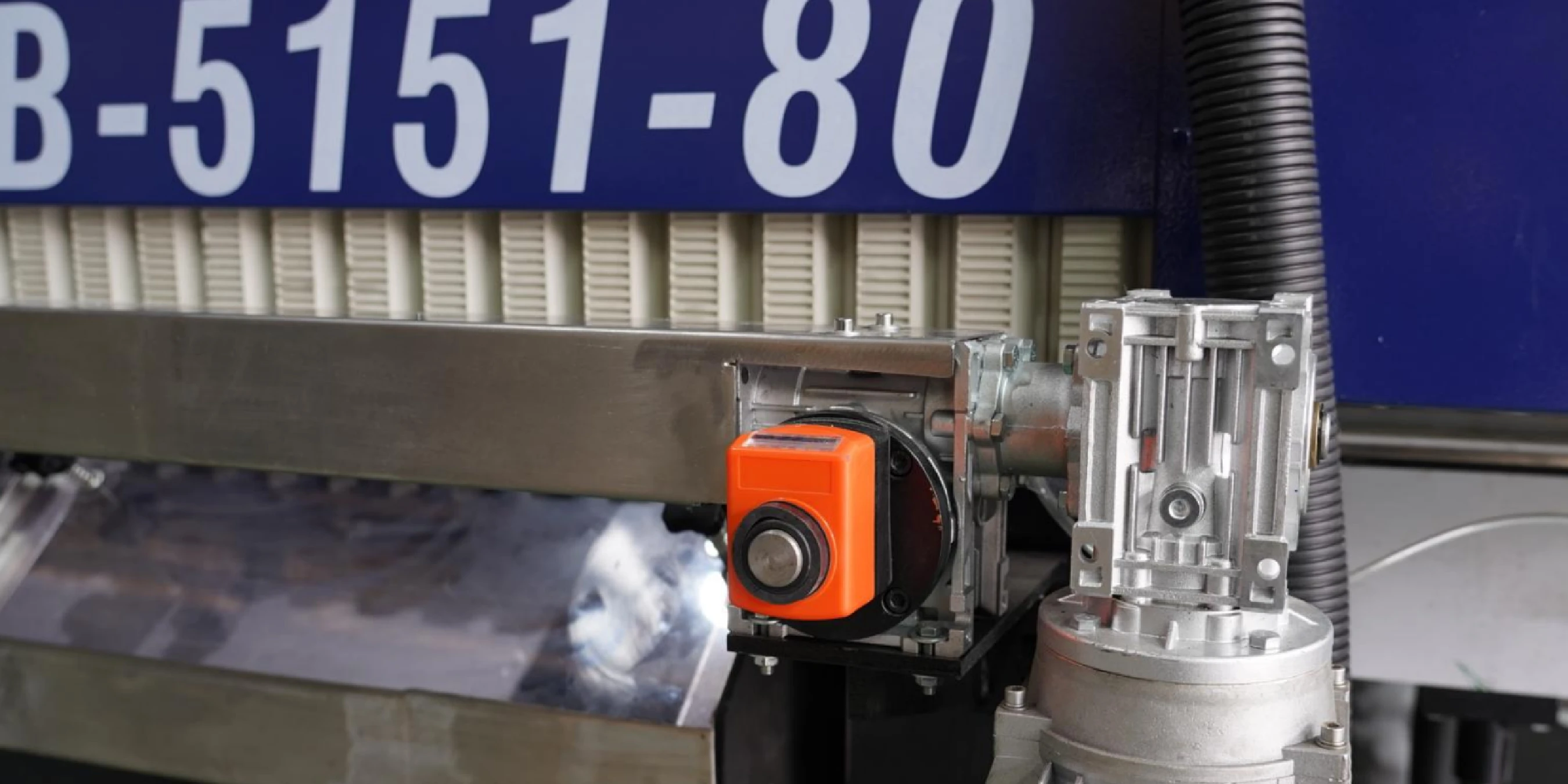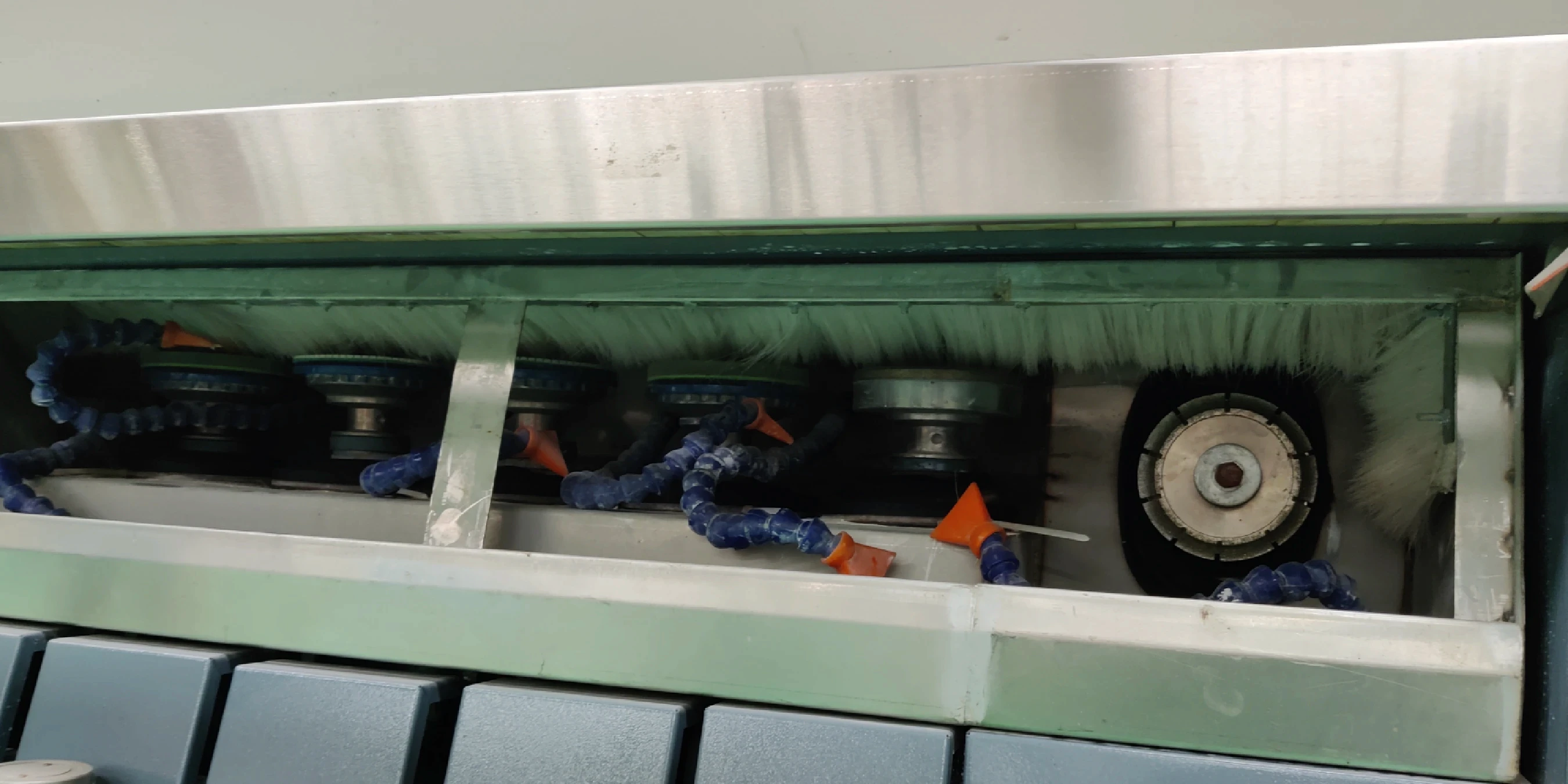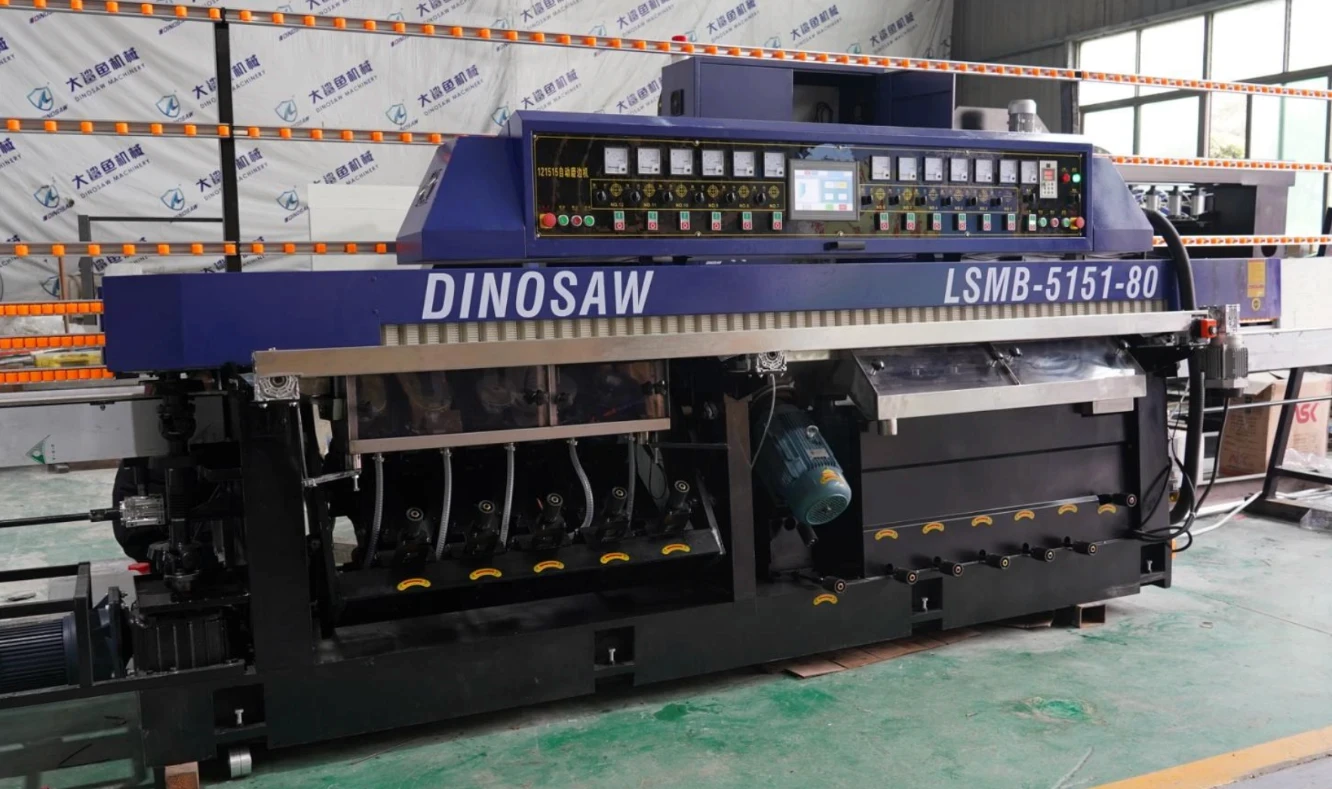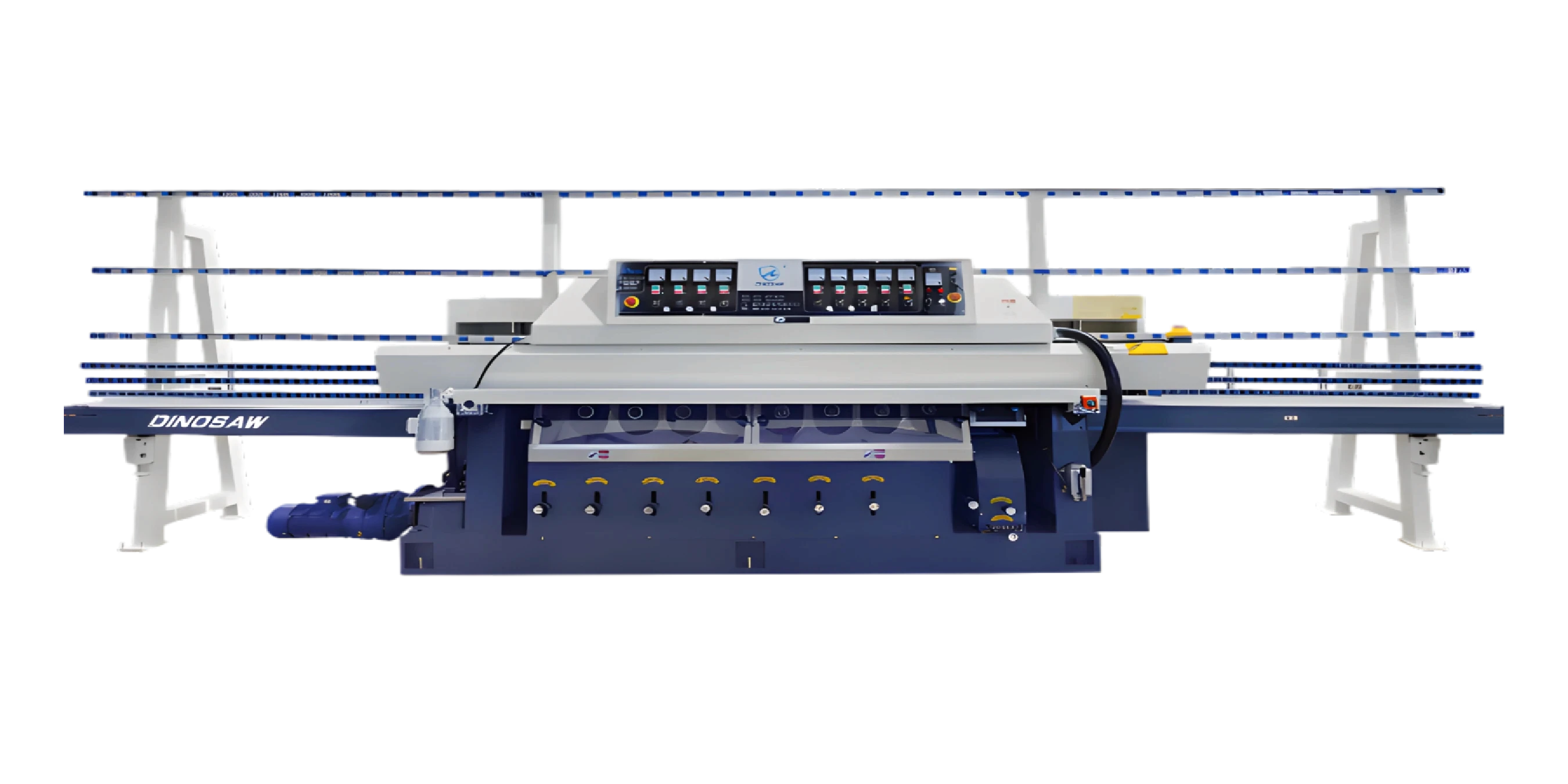Hi, this is Lizzy from Dinosaw ( Not a Robot ). Which Machine ( model ) do you want? Please WhatsApp us now
A neutral guide to selecting the right glass edging machine. Compare PLC vs. CNC workflows, analyze TCO, and use our If-Then selection tree to match a machine to your needs.
Selecting the right glass edging machine is a critical capital investment. Choosing incorrectly can lead to overpaying for unused capacity or under-specifying a machine that creates production bottlenecks. This guide provides a neutral, data-driven framework to help you make the optimal choice based on your specific operational needs.
We will break down the key decision factors, from production workflow to total cost of ownership (TCO), ensuring you specify a machine that delivers immediate value and long-term ROI.
Key Decision Dimensions
Use the following dimensions as a checklist to define your requirements before evaluating suppliers.
- Production Workflow: High-volume, low-mix (repetitive parts) vs. high-mix, low-volume (custom orders).
- Part Geometry: Primarily straight-line edges vs. complex contours, curves, and cutouts.
- Glass Size & Thickness: Minimum/maximum panel dimensions and thickness range (e.g., up to 120 mm).
- Edge Finish Requirements: Basic arris for safety vs. high-gloss polished edges for aesthetic applications.
- Changeover Frequency: How often do you switch between different glass types, thicknesses, or edge profiles?
- Integration & Data: Need for connectivity to MES or other factory systems for production tracking.
- Footprint & Power: Available floor space (approx. 7500×1200×2200 mm; weight ~4 t) and electrical supply capacity.
- Budget & TCO: Initial purchase price vs. total cost of ownership (including consumables, maintenance, energy).
- Support & Spare Parts: Supplier reputation for technical support and parts availability.
- Tooling Layout: The positions and quantity of shaping/polishing wheels and discs vary by model. Confirm the layout is optimized for your typical part mix and required finish class.
Control System: PLC vs. CNC
A common misconception is that CNC is required for complex shapes. In reality, both PLC and CNC systems can produce intricate contours. The geometric capability is primarily determined by the machine's tooling—the cutting blades, grinding wheels, and polishing wheels—along with process parameters like speed and pressure. The control system choice is about workflow efficiency.
- PLC (Programmable Logic Controller): Best for high-volume, low-mix production. It executes pre-set programs with high reliability, making it perfect for dedicated lines producing standard parts. Program changes are less frequent and more procedural.
- CNC (Computer Numerical Control): Best for high-mix, low-volume or custom production. It offers superior flexibility for rapid changeovers, dynamic program handling (e.g., from DXF files), and fine-tuning parameters for different jobs on the fly.

If-Then Selection Tree
- If your primary output is high-volume architectural glass with straight edges, then a PLC-controlled straight line glass edging machine is optimal for its reliability and cost-effectiveness. Risk: Lacks flexibility for frequent custom orders.
- If you fabricate custom furniture with varied shapes and high-gloss finishes, then a CNC-controlled machine is necessary for its programming flexibility and fast changeovers. Risk: Higher initial investment and requires more skilled programming.
- If your workflow involves a mix of standard and custom shower doors with frequent thickness changes, then a CNC model with features like manual pressure-wheel adjustment offers the best balance of speed and versatility. Risk: Throughput may be lower than a dedicated PLC line on standard runs.
- If you need to integrate production data with a factory MES, then a CNC system with network connectivity (e.g., OPC UA compatibility) is required. Risk: Requires IT support for integration; a standalone PLC may not offer this.
- If you are a small shop with a tight budget focused on basic safety edging, then a smaller, fewer-spindle machine may suffice. Risk: May not achieve a high-quality polished finish and will have lower throughput.
- If your process requires drilling or milling in addition to edging, then a full CNC work center is the most efficient solution, consolidating multiple steps into one machine. Risk: Highest capital cost and largest footprint.
Procurement Topics Beyond Price
A smart purchase considers the entire lifecycle. Key topics to discuss with glass edging machine suppliers include:
- Warranty & Support: What is covered and for how long? What are the typical response times for technical support?
- Spare Parts Availability: Are critical spare parts stocked locally? What are the lead times for non-stocked components?
- Training & Installation: Is on-site operator and maintenance training included? Who handles installation and commissioning?
- Acceptance Criteria: Define clear key performance indicators (KPIs) for factory acceptance testing (FAT) and site acceptance testing (SAT), such as throughput, edge quality standards, and uptime.
Scenario Recommendations
- Preferred for High-Volume Straight Edges: A dedicated PLC-controlled straight line glass edging machine.
- Preferred for Custom/Mixed Production: A flexible CNC-controlled glass edging machine.
- Not Recommended: Using a complex CNC work center for exclusively high-volume, simple rectangular parts (inefficient and costly).

FAQs - Selection & Procurement
What factors most influence a glass edging machine's price?
The main price drivers are the number of spindles (more spindles = more processing steps in one pass), the control system (CNC is more expensive than PLC), the brand of core components (motors, electronics), and the overall build quality and machine size.
What is a typical lead time for a new machine?
Lead times can range from 8 to 20 weeks, depending on customization, supplier backlog, and supply chain conditions. Standard models are often available faster. Always confirm lead times with your supplier before issuing a purchase order.
What are the basic installation requirements?
You will need a solid, level concrete floor capable of supporting the machine's weight, a stable power supply matching the machine's specifications, and connections for compressed air and a coolant management system. Refer to our edging machine technical guide for detailed specs.
How much operator training is typically needed?
For a modern machine with a user-friendly interface, basic operator training usually takes 2-3 days. This covers machine operation, loading/unloading, program selection, and daily safety checks. Advanced training for CNC programming or complex maintenance may require an additional 1-2 days.
Can these machines integrate with our existing factory PLC or MES?
Yes, CNC-controlled models can typically integrate with factory-level systems via standard industrial protocols like OPC UA or Profinet for data exchange. This allows for production monitoring and remote program management. PLC models generally have more limited connectivity options.
What is the typical energy consumption of a glass edging machine?
The machine total power is 45 kW (manufacturer-listed). Actual energy consumption varies by operational load and spindle usage. Features like energy-efficient motors and idle modes can reduce power draw during non-production periods.
What is a good spare parts policy to look for?
A reliable supplier should offer a recommended spare parts kit with the initial purchase, including common consumables like belts and sensors. They should also guarantee the availability of critical components (e.g., motors, control boards) for a minimum of 10 years. For a full maintenance checklist, see our edging machine O&M guide.
Is it possible to upgrade from a PLC to a CNC system later?
A post-purchase upgrade from PLC to CNC is typically not feasible or cost-effective, as it involves replacing the entire electrical cabinet, control panel, and wiring harness. It is crucial to select the correct control system from the outset based on your projected five-year workflow. Our DINOSAW Glass Edging Machine offers both options at the time of order.
























 English
English 中文
中文 Italian
Italian Türkçe
Türkçe Português
Português

